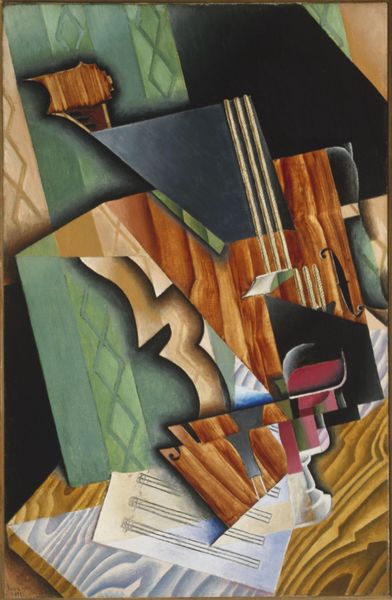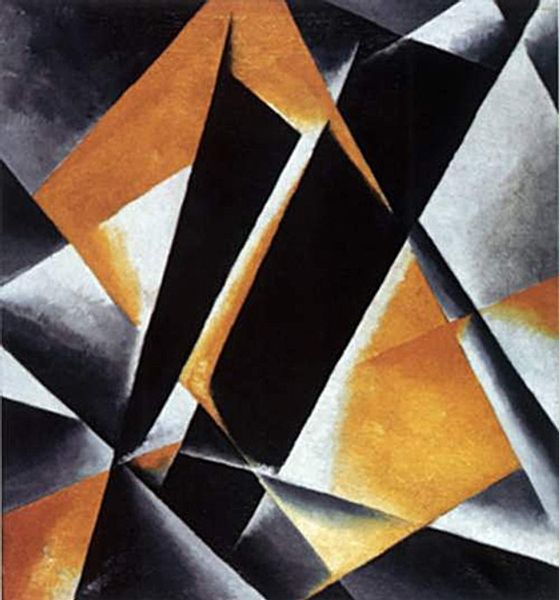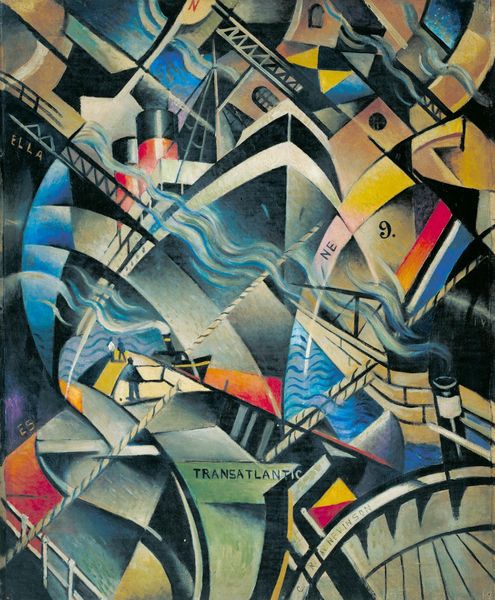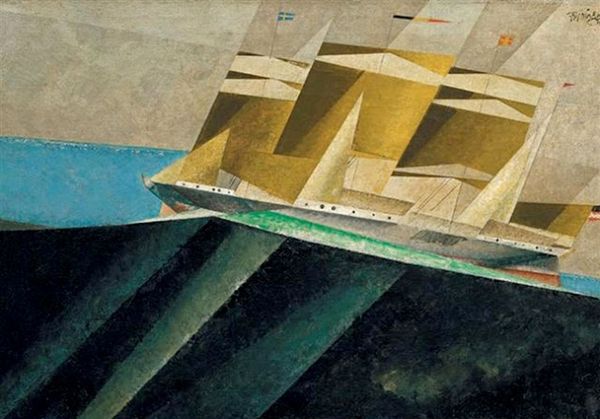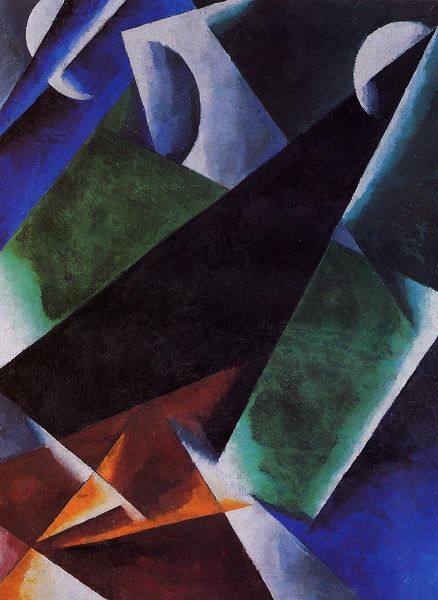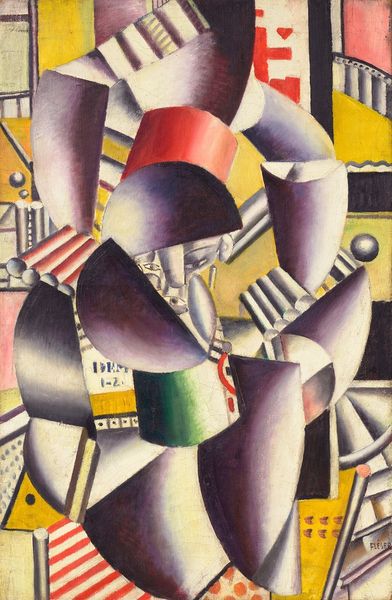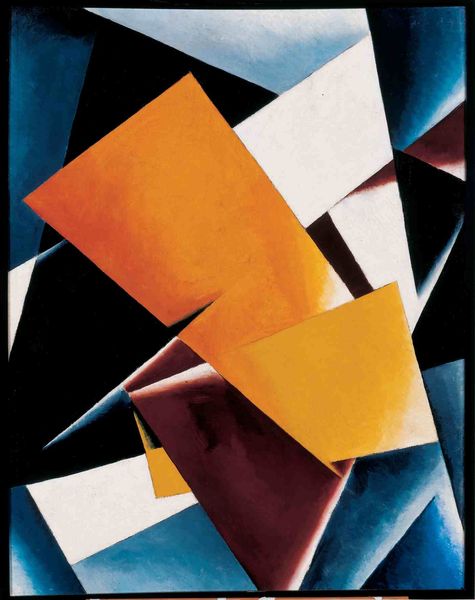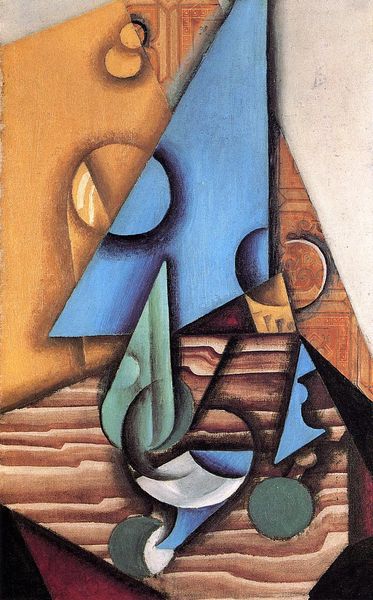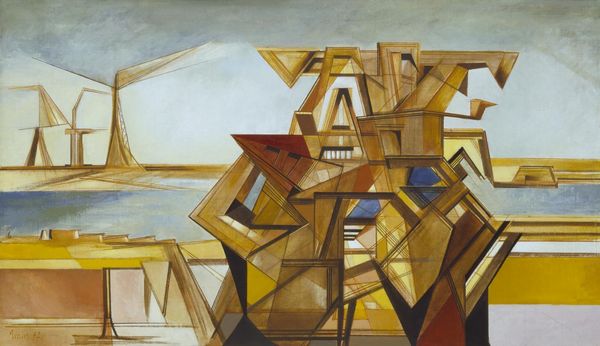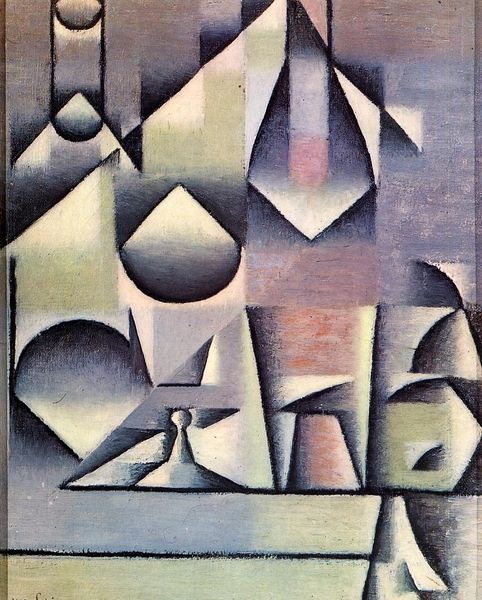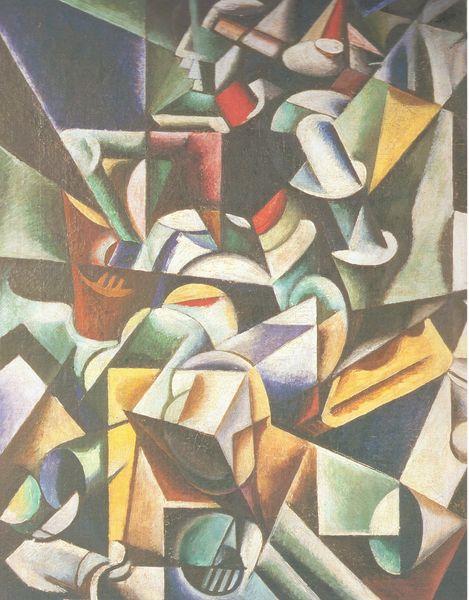
painting, oil-paint
#
cubism
#
painting
#
oil-paint
#
landscape
#
geometric
#
abstraction
#
abstract art
#
modernism
Copyright: Public domain
Curator: Let's turn our attention to Josef Capek's "Robinson," an oil painting created in 1915. What strikes you initially about this work? Editor: The painting's atmosphere is certainly impactful! The geometric shapes in blue and neutral tones convey a sense of melancholy, yet with an intriguing element of deconstruction at play. Curator: Capek was heavily influenced by Cubism, as is apparent in his manipulation of form and perspective. The artist is breaking down the scene into its basic components, yet it retains enough visual clues for our interpretation. Editor: Those shard-like shapes—they give off a fragmented mirror feeling! Considering the title, the visual disruption possibly represents the disorienting and psychologically taxing theme of isolation, like a shattered identity lost at sea. Curator: That's a rich interpretation! What I find particularly compelling is how Capek employs the very materiality of paint to reinforce meaning. Notice the application technique: The visible brushstrokes emphasize the constructed nature of the work. It acknowledges that painting is a product, not merely a representation. Editor: Ah, so it's not just about reflecting emotional fragmentation; it's about acknowledging artifice! Even that distant ship is an iconic, albeit simple, symbol of travel and the desire to return, set against a very stylized, almost dreamlike space. Curator: Precisely. Capek might be making us think about the industry behind the image—pigment creation, brush manufacture, the socio-economic dynamics that allow artistic expression. What’s its place and value in society? Editor: Yes, it challenges that high-art perception and reminds us that making and consuming art is deeply entrenched in our socio-economic system. And returning to the ship... one has to think of how it is more the symbol of a ship than a realistic depiction of a sailing vessel. Curator: True, in the end, both interpretations highlight essential facets. The painting offers a chance to delve into how forms speak to the human experience through isolation and identity, while equally asking us to consider how those symbols are fabricated in the first place, and with what consequences. Editor: Indeed, it leaves us with a sense of both psychological depth and an awareness of the artistic process, all framed within this striking Cubist landscape.
Comments
No comments
Be the first to comment and join the conversation on the ultimate creative platform.
